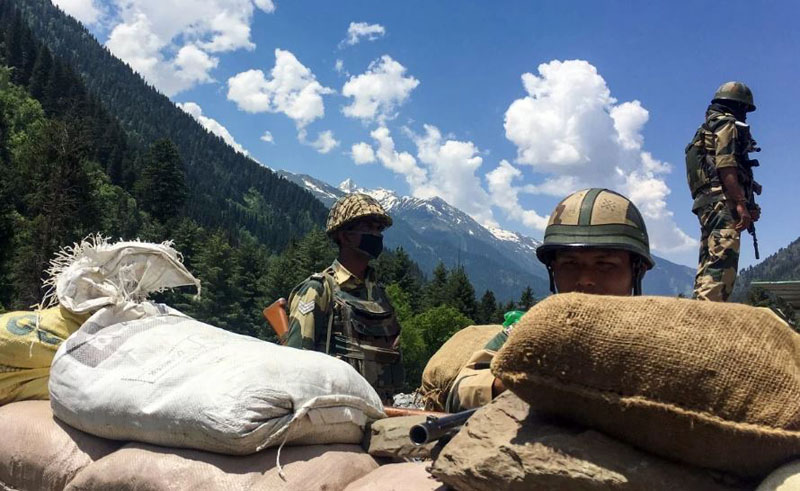
(TibetanReview.net, Feb11’21) – The armies of China and India have started to disengage simultaneously on Feb 10 after months-long border standoff at southern and northern banks of Pangong Lake (in eastern Ladakh), and Chinese experts hailed the move as a key breakthrough that will ease border tensions and hopefully lead to peace and stability, reported China’s official globaltimes.cn Feb 10.
The report cited Wu Qian, spokesperson for China’s Ministry of National Defense, as saying the move was based on the consensus reached in the ninth round of the China-India Corps Commander Level Meeting in late January.
The report cited Chinese analysts as saying the location of the disengagement had been a focus and a core issue of the months-long border faceoff.
Now both sides should monitor each other over the disengagement and make sure they all abide by the agreement, the report cited Wang Wenbin, a spokesperson at China’s Ministry of Foreign Affairs, as saying on the sidelines of a routine press conference on Feb 10.
While it remains difficult to cancel the tense standoff and return to peace and stability once and for all, the future looks promising, Qian was cited as saying.
Highlighting the details of the disengagement agreement, India’s Defence Minister Mr Rajnath Singh has said Feb 10 that both sides will cease their forward deployments in a phased, coordinated and verified manner. The Chinese side will keep its troop presence in the North Bank area to east of Finger-8. Reciprocally, the Indian troops will be based at their permanent base at Dhan Singh Thapa Post near Finger-3, newsonair.com Feb 11cited Singh as saying.
Both sides have also agreed to remove any construction done by them in these regions, and the area between Finger 3 and Finger 8 will not be patrolled by either side till there is an agreement after military and diplomatic discussions. After the disengagement from the banks of the lake, the senior military commanders will meet within 48 hours to resolve other issues, reported the indianexpress.com Feb 11.
Mr Singh has said the agreement, whose implementation began on in Feb 10, aimed at substantially restoring the situation to that existing prior to the commencement of the standoff last year.
He has said there were still some outstanding issues with regard to deployment and patrolling at some other points along the LAC in Eastern Ladakh. These will be the focus of further discussions with the Chinese side.
Reporting on the disengagement deal, Russian news agency TASS said Feb 10 that “at least 20 Indian soldiers and 45 Chinese servicemen” were killed during the clashes at the Galwan Valley in eastern Ladakh in June last year.
The report said, “Chinese and Indian forces clashed in the region in May and June 2020, resulting in at least 20 Indian and 45 Chinese servicemen dead. Following these incidents, New Delhi and Beijing increased the concentration of forces in the region to about 50,000 people each.”
China never officially admitted the number of its dead, although American intelligence put the figure at over 40.





